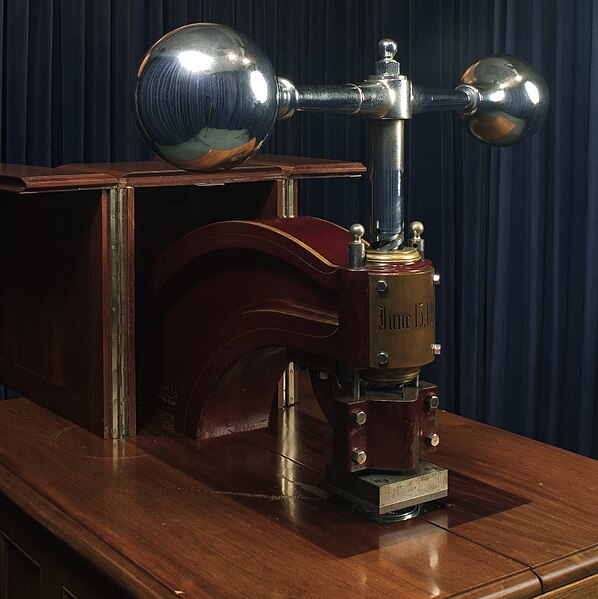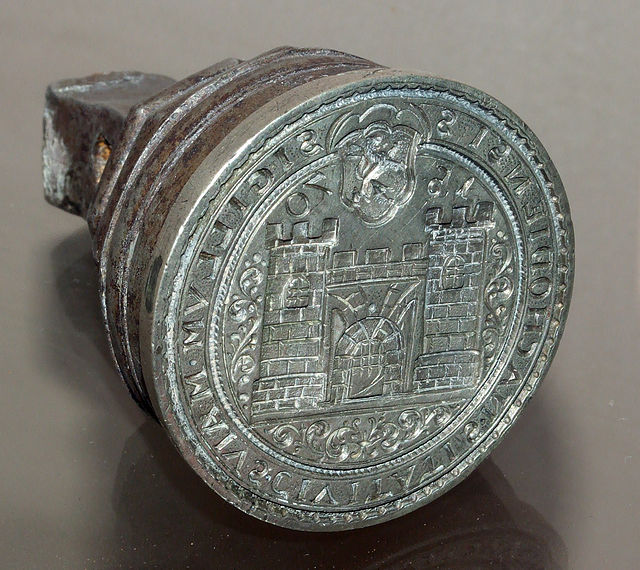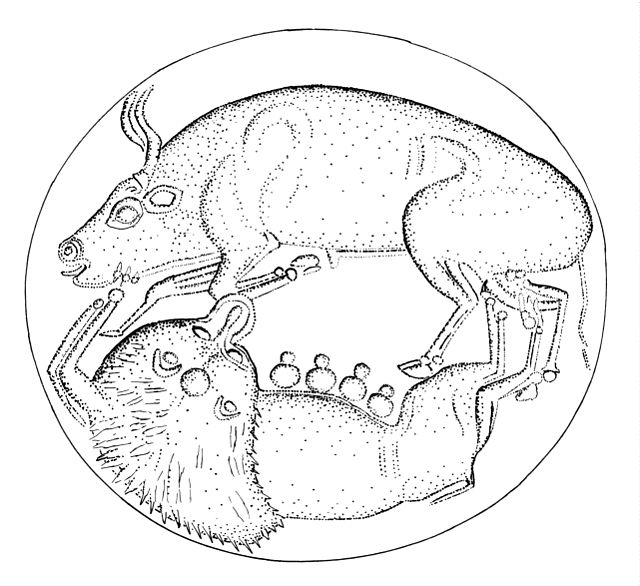Great Seal of the United States
The Great Seal is the seal of the United States. The phrase is used both for the impression device itself, which is kept by the United States secretary of state, and more generally for the impression it produces. The obverse of the Great Seal depicts the national coat of arms of the United States while the reverse features a truncated pyramid topped by an Eye of Providence. The year of the U.S. Declaration of Independence, 1776, is noted in Roman numerals at the base of the pyramid. The seal contains three Latin phrases: E Pluribus Unum, Annuit cœptis, and Novus ordo seclorum.
United States passport
The arms as held by Columbia in the war scene of the United States Capitol's 1865 Apotheosis of Washington
The press and cabinet, made in 1903
Clydia Mae Richardson, who led the effort to put the seal on display, and John Foster Dulles imprint a document during the 1955 ceremony
A seal is a device for making an impression in wax, clay, paper, or some other medium, including an embossment on paper, and is also the impression thus made. The original purpose was to authenticate a document, or to prevent interference with a package or envelope by applying a seal which had to be broken to open the container.
Town seal (matrix) of Náchod (now in the Czech Republic) from 1570
Present-day impression of a Late Bronze Age seal
A stamp seal and its impression.
Mesopotamian limestone cylinder seal and the impression made by it—worship of Shamash








